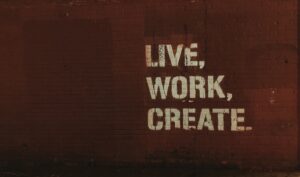
Unification of HR Systems – Set Up for Success
Podcast Sponsored by: Tydy Considering a new HR system for your company? Finding the right HR system has become a critical piece to a successful,

Podcast Sponsored by: Tydy Considering a new HR system for your company? Finding the right HR system has become a critical piece to a successful,

Working remotely is something that many of us have experienced during the pandemic. If you look at your social media feeds, you will notice multiple

Over the past 24 months, IT teams have been burdened with many unprecedented challenges. Most notably, a rising number of security concerns. But enhancing security

For many of us, virtual meetings have become the lifeblood of remote working communication. COVID-19 has made face-to-face meetings the exception rather than the rule.

As we reinvent work in the post-pandemic world, can we see finally see the benefits of a shorter workweek? Americans work harder than their counterparts

How can companies create a remote working environment that is both productive and emotionally comfortable? With offices forced to close for long periods due to

Remote work, and working within a remote team, is now a part of the new normal—but not everyone was prepared to make that transition. This

All work and no play makes Jack a dull boy. So goes the saying. For American professionals, however, the work week — and work itself

The main goal of any company, of course, is to be successful. And the level of employee productivity is one of the crucial factors that

Remote work isn’t new. In fact, working from home been on the rise since 2010. But this new decade brought with it COVID-19, triggering a

As the spotlight has brightened on racism. In response to recent miscarriages of justice, the emphasis on identifying racism within other aspects of life has

In some countries, as lockdown measures continue to ease, businesses are opening and employees are heading back to work. But some of us are still

Nobody needs to tell you that we’re in hard times. A pandemic is sweeping the nation, a trail of personal and economic devastation behind it,

In the past several months, many companies have modified their performance programs. From streamlining their review processes to running more frequent pulse surveys, organizations around

Listen to the full conversation and see our questions for the upcoming #WorkTrends Twitter Chat. And don’t forget to subscribe to the podcast, so you

What’s the worst thing an employee can say on any given day? How about, “I don’t belong here?” The schism that takes place when an

Listen to the full conversation and see our questions for the upcoming #WorkTrends Twitter Chat. And don’t forget to subscribe to the podcast, so you

Coronavirus has changed the way American businesses operate, to say the least. And from work-from-home mandates to reopening strategies to locking down again in the

Leadership has its own battles with productivity, as longtime TalentCulture friend and leadership expert Gregg Lederman says. He recently dove into why some leaders struggle

A lot has been said about stress in the workplace over the years, and for good reason. Stress takes a serious toll on employees, both

Working from home is a necessity for many of us right now. It’s a critical way to help flatten the curve, for one. It can

Despite the lip service organizations give to reducing productivity-killing emails and unnecessary meetings to help workers focus on what matters, the problem of workplace distraction

Once touted as a powerful tool to encourage collaboration and creativity, cubicle-free open workplaces have taken a hit in the business world as research indicates

Research shows that kids experience a “summer slump.” When they’re out of school, they’re not actively focused on learning, and their brains check out. But

How are you feeling? When you close your eyes at night, do you feel the phantom buzzing of your phone? Are you tempted to check